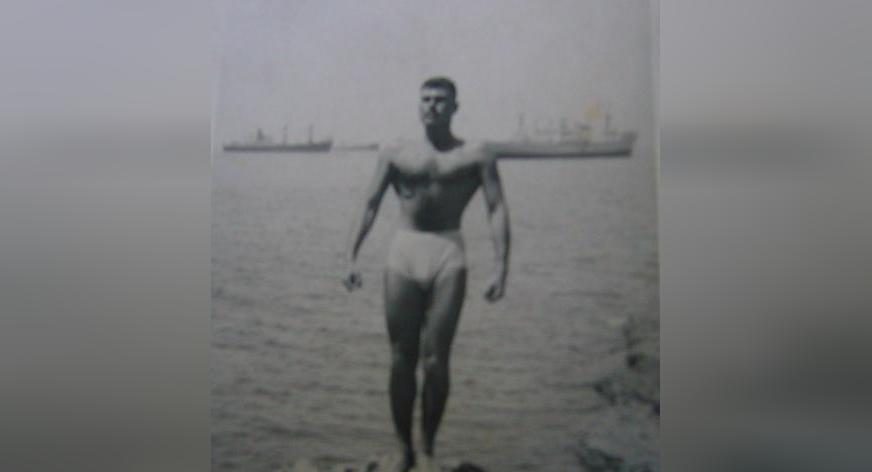

We were recently contacted by Omar Hossino, a MyHeritage user with Syrian roots. His story is particularly inspiring for many people around the world who are held back in their research by a lack of records and other information.
Omar’s story demonstrates how MyHeritage helps people contact their family (in Omar’s case, Syrian family members), build their family tree, learn about their family history and create a unique path of communication with relatives.
Omar’s interview is below. We hope you find it as fascinating as we did.
——
Omar Hossino was born in West Virginia, but his family is originally from the small city of Salamieh in central Syria. He became interested in family tree research when he visited Syria and met many family members.
In his city, many people share the Hossino surname, but Omar Hossino didn’t know exactly how they were related. He was curious about the family’s origins and wanted to create a project to provide more information about their roots – the city of Salamieh itself is only a little more than 150 years old.
“In Salamieh, family is an extremely important thing. Family names are common in the city and families have reputations and stories behind them. Unlike in the US – which usually has family reunions once a year – in Syria, we have Hossino family reunions once a month.”
The first Friday of each month is the Hossino family reunion and all the men of the entire family who live in the city are invited to come and meet to keep family ties strong.
“Not all family members show up to every gathering, but many do, which has caused our family to be very close and strong.”
Although Omar bought and tried almost every genealogy software program in existence, he writes that:
“The MyHeritage software was absolutely essential in helping me to build my family tree, and is the best for its ease of use and its computational power. For instance, if you click on any member in your family tree there is an option to find out how that person is related to you. I now know who is my third cousin three times removed, or my great-great-uncle.
The software also allows you to put in all kinds of information from blood type and illnesses to pictures, and easily forms trees and charts and other items when all is said and done.
The “All in One” tree option only exists on MyHeritage and creates a tree with every single person on your tree no matter how distant a relative he or she is.”
Getting started was much easier than Omar thought it would be. He had absolutely no access to genealogy records to begin his tree. Databases discovered were mainly for the US and Western Europe, with no Middle Eastern information.
“My research led me to find that the only way you could find documents on family history in Syria was to visit the old Ottoman courthouses and find old marriage records, because death records were not kept during the Ottoman Empire.”
However, writes Omar, because modern Salamieh is so young, the information simply did not exist, as there was no Ottoman courthouse in the city.
As all good genealogists do, Omar began with what he knew, which was quite a bit. He was able to reach back to his paternal great-grandparents and collect some 200 or so names. But it was far from enough.
“My 74-year-old aunt – with a strong memory and who knows a lot of the family – was able to help with the rest. For some six months of interviews, I asked her enough questions to create a very large tree with some 450 people, reaching back to my great-great-grandparents, their brothers and sisters, and their descendants.”
Omar has been working on his tree for four years and it now contains more than 1,000 people. Excited by his never-ending adventure, his uncle in Syria and cousin worked on their own family tree project.
“It was an absolutely wonderful experience to have so much family work so hard on it and assist me, especially in finding old books about the history of our city, which included references to our last name.”
His uncle and cousin made their own tree by hand over a year. It reached back to Omar’s great-great-great-great-great-great-grandfather Hussein Hossino, the first Hossino born, in 1820.
“The problem was that the tree did not include females – it is very uncommon to include female offspring in family trees in the Arab world because they are considered ‘married off’ and ‘given away’ to the new families that they marry.
Although this was a major problem – through research with my aunt, and two interviews with my oldest relative in Salamieh separated by one year, my grandfather’s cousin Fadel Hossino, 99, with a sharp memory – I was able to compile most missing pieces of my tree.”
The experience of meeting distant relatives and talking to them about their family and their experiences in their small city 70 years ago was amazing.
“I made so many friends and almost everyone in the distant family knows who I am and is friends with me, although I was born in the US and only go to Syria on visits.”

Bodybuilding by the Sea: Another of the wonderful family photos Omar found by through his work on MyHeritage
Without MyHeritage, says Omar, my family tree would not have been possible.
“MyHeritage allows you to quickly jump to areas that you want to go to and submit information. It easily allows you to detach branches of the tree that were incorrectly placed, and put them on other branches. It allowed me to merge the numerous trees and interviews into one large tree in a very rational way and get a by product, which would have been impossible without digital software.”
Through Omar’s research on his family tree, he felt like a historian, “but a historian of my family’s special and unique history and story, a story that nobody would care for except for people in my small city and in my family. This is what made the experience so special.”
“I learned that my sixth great-grandfather Hussein Hossino was one of the first 16 people who rebuilt and founded the modern city of Salamieh in 1864. He was young teenager originally from the small village of Doreen, near the village of Haffe in Latakia province in Syria.”
The then-Ottoman Sultan had allowed Ismaili Muslims – who were in diaspora throughout the empire but especially in Syria – to migrate and rebuild their ancestral homeland of Salamieh which had been destroyed by the Qarmatians 1,000 years earlier.
In return for settling the territory, Ismailis would have to pledge to protect the city of Hamah, about 40 miles away, from recurrent Bedouin attacks. Hussein was one of 16 people who followed Emir (“Prince”) Ismail, then-leader of the Ismailis, on his quest to settle Salamieh.
On his journey, Hussein walked through traditional Ismaili heartlands in Syria, including Qadmus and Masyaf, before reaching and settling Salamieh. He had many children and grandchildren, but what was interesting was that – decades after Hussein’s death – large branches of the family had converted to Sunni Islam, Many branches would convert to Sunni Islam for a few generations and then their children converted back to Ismaili.
“While the overwhelming majority of the Hossino family is Ismaili, my roots are Sunni. My grandfather converted to Sunni Islam, became an imam and helped build the first Sunni Mosque in Salamieh, while his brother was the Grand Sheikh or Wa’iz of the Ismaili of Salamieh.”
“It was interesting doing my research learning that both lived in the same house, and argued with each other for decades in an attempt to convert the other. It was interesting to learn of the atmosphere of diversity and religious tolerance which was prevalent in our household.”
“Through my research, we found that almost everyone in the small village of Doreen, in northern Syria, is from the Hossino family. Although separated by almost 200 years, delegations of our Salamieh family began to regularly visit Doreen to establish relations with this side of the family which had been cut off.”
This would have not been possible if I did not begin my family tree research, and I feel like we have really strengthened our family throughout Syria with this.
One major benefit of creating his family tree – which Omar did not envision when first making it – was that he has learned which diseases run in the family and the average life span of his ancestors.
“In placing birth and death dates and entering diseases, I have found patterns running in the family. I have also even included blood type of some of immediate relatives. This will perhaps be of tremendous value to many family members in the future.”
Omar’s tips for anyone beginning family tree research:
“First, download MyHeritage’s Family Tree Builder. Then, get a laptop. Carry it around with you and insert everything you possibly can learn from all family members you interview. He also stresses that people should be patient. He’s been working on his family tree for four years and it is not yet where Omar wants it.”
He intends to eventually reach even more depth and information and still searching for old pictures of many relatives.
“If you’re from Western Europe or the US, it is much easier to build your family tree due to genealogical records. But, if you’re from a small town, it has its major upsides, such as the ease with which you can meet many family members, find connections and conduct interviews.”
We hope that you are as inspired as the MyHeritage team in reading Omar’s story. We’d like to invite others to share their stories with us, please email marketing@myheritage.com.
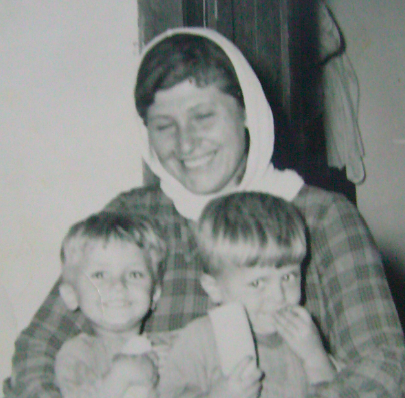





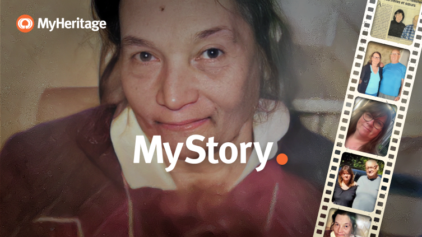
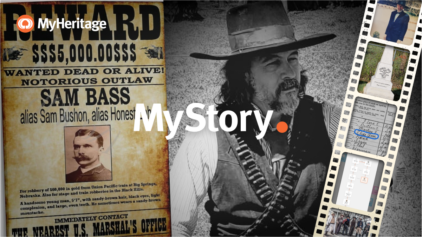
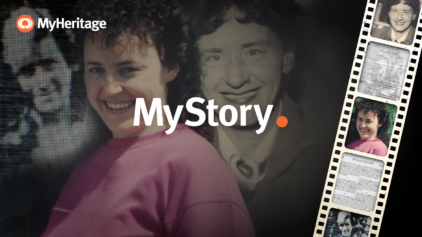
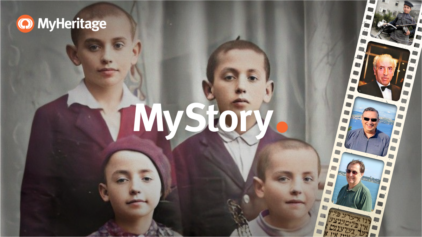
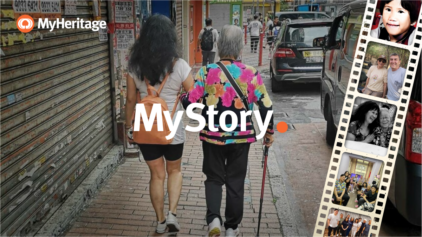


Patricia
February 3, 2012
Thank you Omar for shareing your story. It is truly inspirational. I wonder how many hours, hours beyond counting you spent on your reasearch. I wish you well.